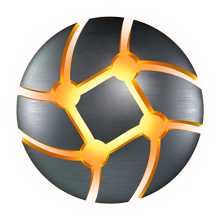Spastic hemiplegia: what it means and how it’s treated
If someone in your family is dealing with the diagnostic of spastic hemiplegia and you need to know what it is, here’s the information you need to start your research.
Types of Cerebral Palsy

Firstly, we need to clarify what ‘’spastic’’ means. Spastic means the condition is related to a muscle spasm in the body. Muscle spasms are movements of our muscles, involuntary and unpredictable. They can provoke pain and tightening of your muscles. Secondly, we need to know where this fits in the cerebral palsy category.
Now we’ve got that clarified, let’s move on to the diagnosis itself. Cerebral palsy is one of the most common childhood conditions, as all the studies have shown. CP affects the brain before during or after birth. Moreover, it has different types of severity and ways in which it affects the body and other organs.
The types of cerebral palsy are:
- Spastic
- Dyskinetic
- Ataxic
- Mixed
Some of these types are more common, whilst others belong to a very high degree of severity. Its symptoms differ and no one person feels it the same way. The good news is that all types of cerebral palsy can be improved. With the right therapy and treatment, it can be very much improved.
Spastic cerebral palsy
Now onto our topic for this article today, let’s delve deeper into what spastic cerebral palsy actually is. Spastic cerebral palsy (CP) is the most common form of the disorder actually. It affects around 70% of diagnosed cases. Therefore, when we talk about hemiplegia, it means that this affects only one side of the body. When affecting two sides it’s called diplegia, and when it affects more sides or all of the body, it is called quadriplegia.
Spastic hemiplegia is described as involuntary muscle movements, being associated with upper motor neuron paralysis.
Some of its symptoms are:
- Holding one hand in a fist
- Balance problems
- Issues with motor skills
- Favoring one hand over the other
- Weakness on one side of the body
- Shaking muscles
- Contractures
The severity of spastic hemiplegia differs, according to each individual case.
Treatment of Spastic Hemiplegia
It is important to note the fact that there is no cure for spastic hemiplegia and none of the cerebral palsy types. However, there are different treatments methods that can significantly improve one’s life.
Some of the common forms of treatment include:
- Physical therapy
- Play therapy
- Sensory integration
- Strength training
- Speech therapy
- Oxygen therapy
It is important that you discuss with your doctor to see the best available treatment. Similarly, there is more attention dedicated to play therapy for kids and young people with cerebral palsy. It has been proven that it helps them improve posture and coordination, in levels up to GMFCS 3. In addition,it gives them joy and motivates them. For example,you can check out our games when we launch our new platform. Sign up and be one of the first to check it out.
Stasism is a revolutionary new social online platform with therapeutic physical video games made exclusively for people with Cerebral Palsy. The first of its kind, delivering a constant stream of new and exciting games, characters, features and much more, leading to a happier childhood. Discover how.
